Are you curious about the magical properties of witch hazel? Witch hazel plant is a true wonder of nature.
With its unique branching pattern and fragrant yellow flowers that bloom in the fall, it can grow up to 20 feet tall.
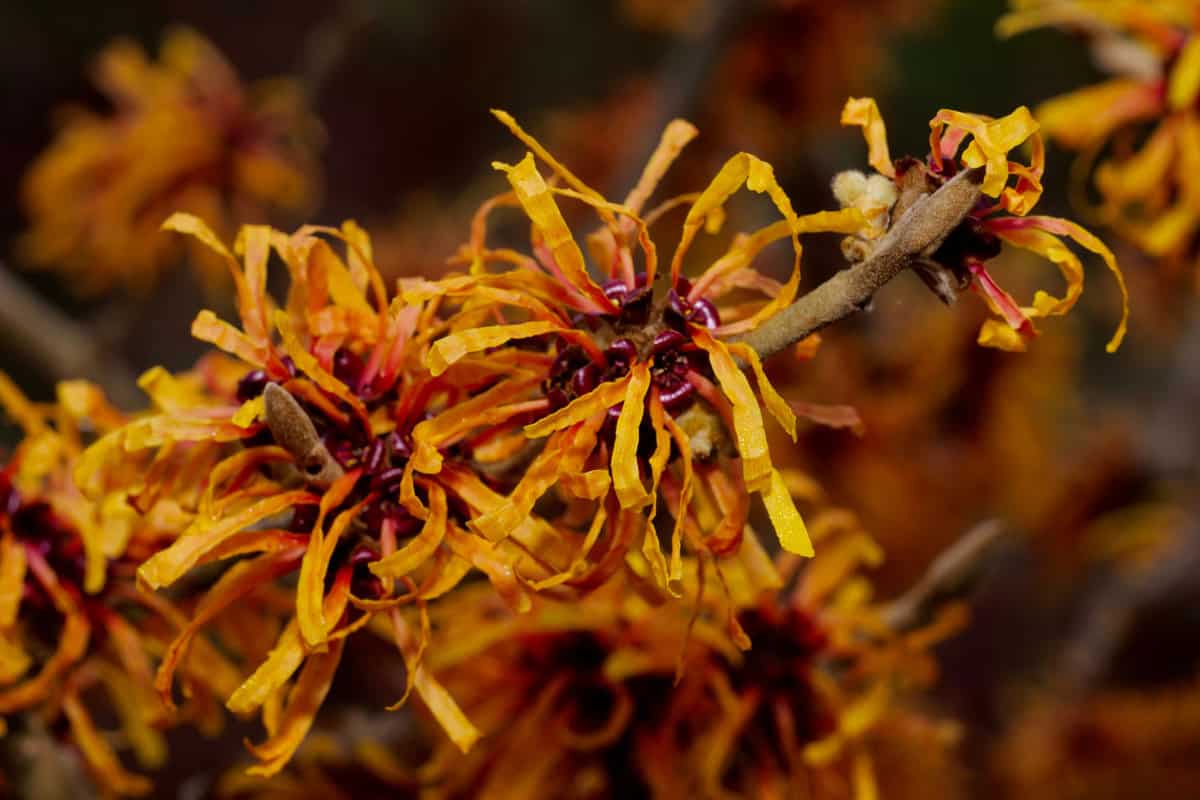
And if that's not impressive enough, its distinctive seed capsules can explode when ripe, shooting out seeds up to 30 feet away!
While it is most commonly known for its medicinal properties, it is also grown in other parts of the world, including Europe and Asia.
So whether you're a nature lover, a curious explorer, or simply looking for a natural remedy, join us as we discuss witch hazel, including the fascinating origins and medicinal properties of this enchanting plant.
Origins Of Witch Hazel
Witch hazel is a deciduous shrub belonging to the Hamamelidaceae family.
It is native to North America and can be found growing in woodlands, along streams and rivers, and in other moist areas.
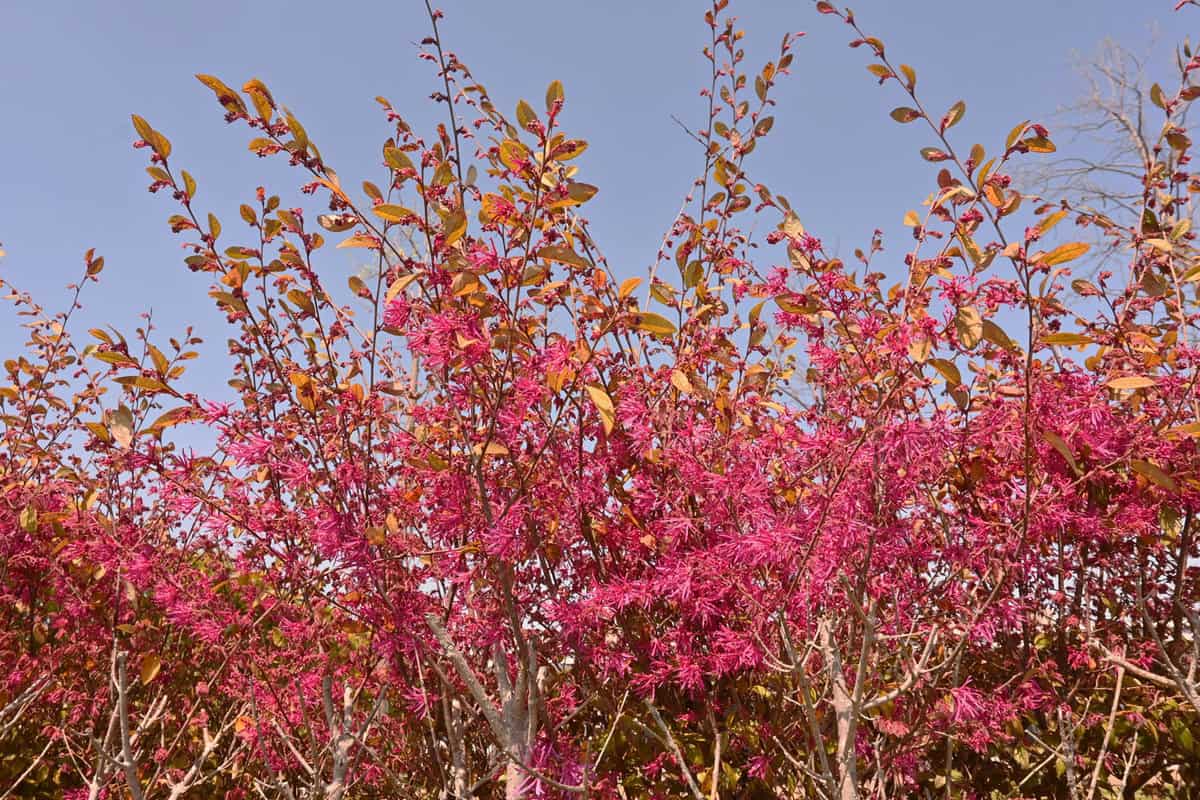
The plant's name has a fascinating history.
Early European settlers believed that its branches could be used by witches to cast spells, while Native Americans used it for medicinal purposes, including the treatment of skin irritations, wounds, and insect bites.
Today, witch hazel is widely cultivated for its medicinal properties and is a popular ingredient in many skincare products.
It blooms in late fall and early winter with fragrant yellow flowers, making it a welcome sight during the colder months of the year.
Whether you're interested in its medicinal uses or simply enjoy its beauty in the wild, witch hazel is a plant with a rich history and many uses.
The Ideal Growing Conditions for Witch Hazel
For witch hazel to thrive and produce vibrant blooms, it's essential to ensure that it's grown in the optimal conditions.
Here's what you need to know:
Soil Requirements
Witch hazel prefers well-draining, acidic soil with a pH between 5.0 and 6.5. It can tolerate a variety of soil types, including clay, loam, and sand, as long as the soil is not compacted.
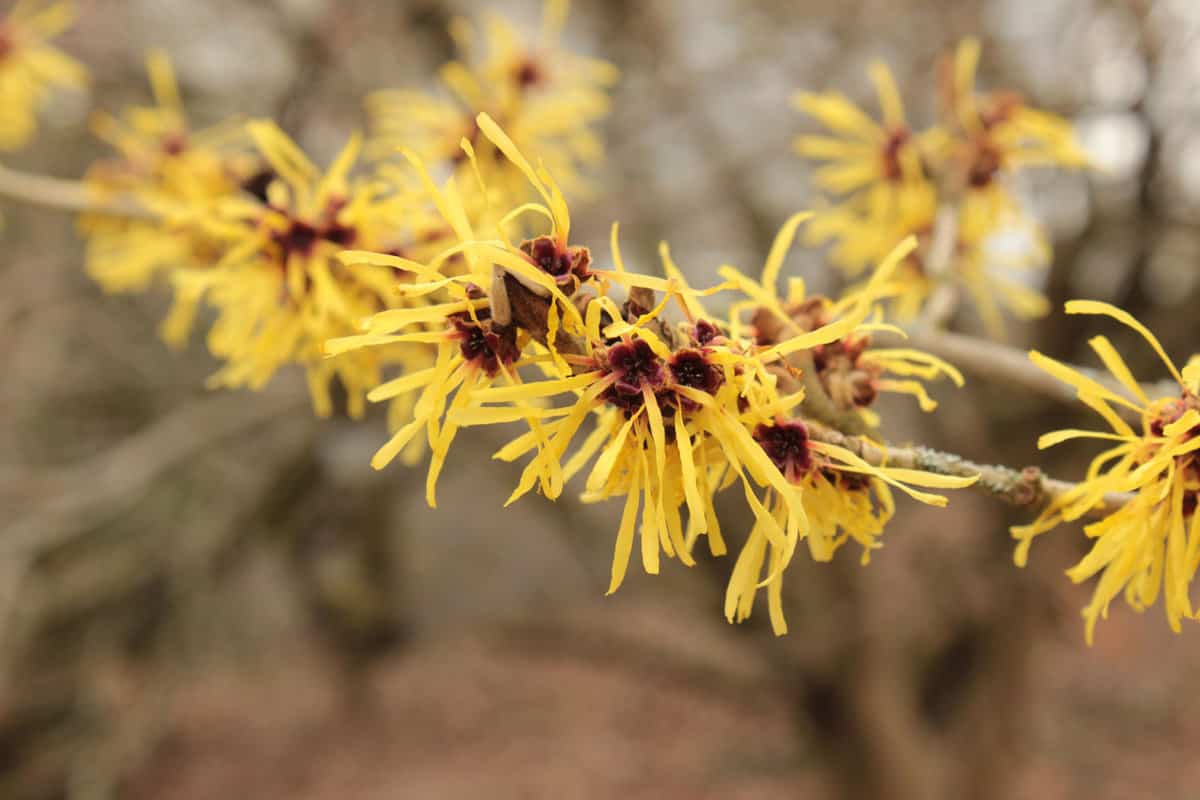
However, it may require additional fertilization to ensure optimal growth.
Adding organic matter to the soil can help improve drainage and increase soil acidity.
Climate Preferences
This plant grows best in temperate climates with cool, moist winters and warm, humid summers.
It can tolerate a range of temperatures, but is most productive in areas with an average annual temperature of 50-60°F (10-15°C).
However, it may require additional watering during dry periods.
Sunlight Exposure
Witch hazel prefers partial shade to full sun, but can tolerate full shade or full sun if necessary.

In areas with hot summers, it may benefit from some afternoon shade to prevent leaf scorch.
It is a hardy and adaptable plant that can thrive in a variety of growing conditions.
With the right soil, climate, and sunlight exposure, it can produce beautiful and fragrant flowers in late winter or early spring.
Regions Where Witch Hazel Grows Naturally
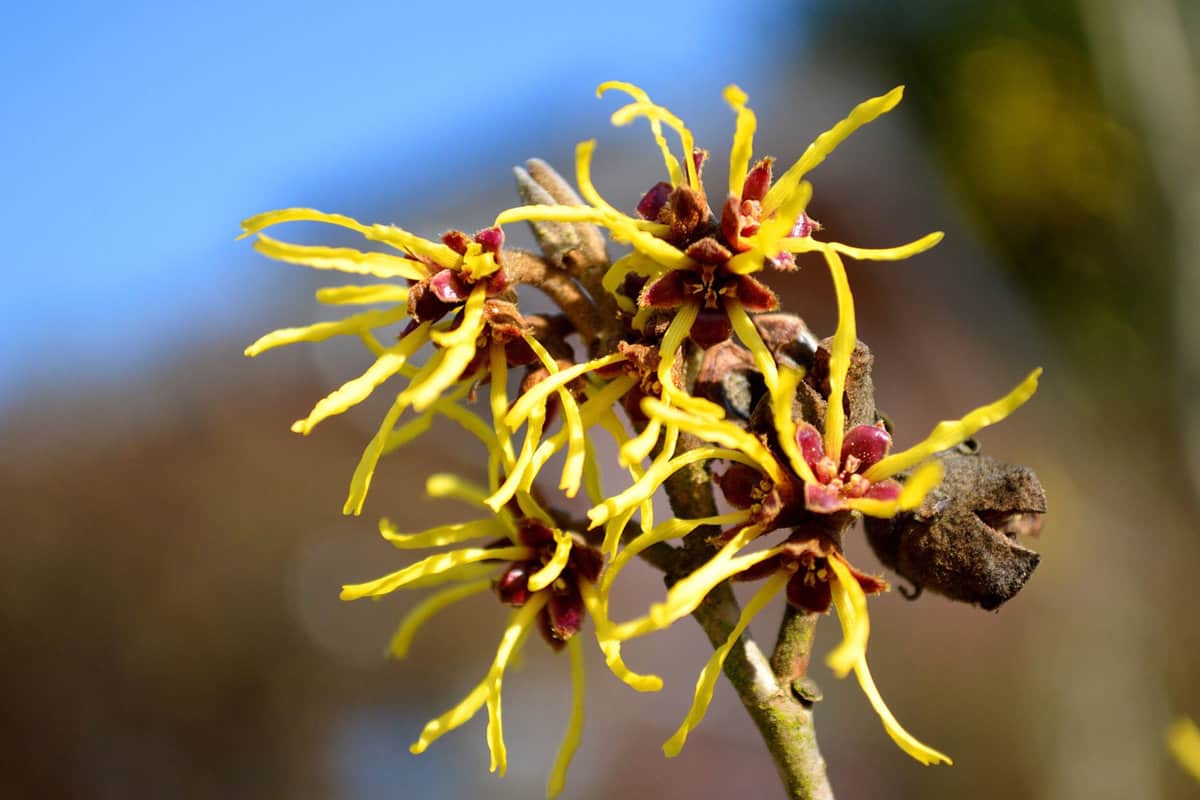
These are the areas where witch hazel is commonly found:
Eastern United States
Witch hazel is most commonly found in the eastern United States, particularly in the Appalachian Mountains.
It grows in a variety of habitats, including woodlands, swamps, and stream banks. In this region, witch hazel usually blooms in the fall, from October to December.
Central United States
It can also be found in the central United States, particularly in the Ozark Mountains.
In this region, witch hazel usually blooms in the late fall, from November to December.
Western United States
While it is less common in the western United States, witch hazel can still be found growing naturally in some areas.
It is typically found in moist, shady areas, such as along streams or in canyons. In this region, witch hazel usually blooms in the winter, from January to March.
Canada
It can also be found growing naturally in Canada, particularly in the eastern provinces of Quebec and Ontario.
It grows in similar habitats to those in the eastern United States. Thus, in Canada witch hazel usually blooms in the fall, from October to December.
Cultivation of Witch Hazel in Non-Native Regions
Although a gem from the North America, witch hazel is a versatile plant that can thrive in non-native regions under suitable conditions.
Tips for cultivating it outside its natural habitat:
Planting
Witch hazel can be planted in the fall or spring. It is best to plant it in an area that receives partial shade.
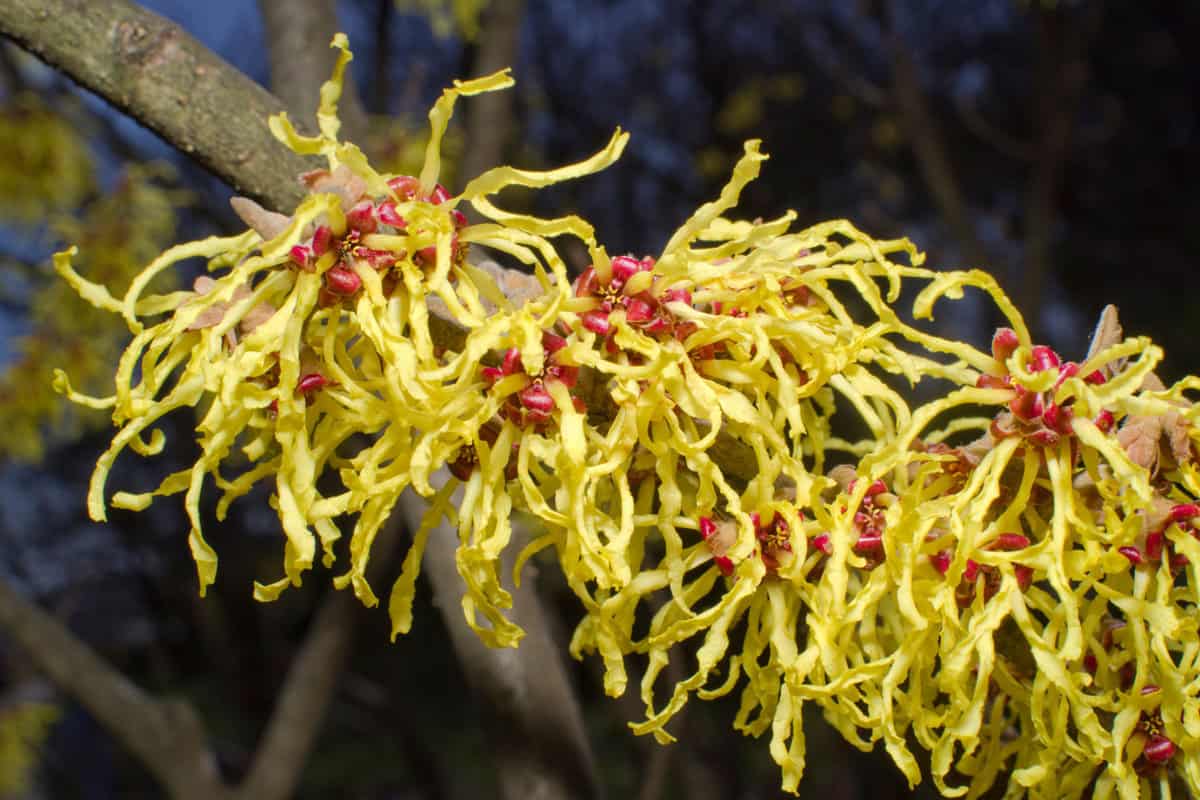
The planting hole should be twice the size of the root ball. After planting, the soil should be watered thoroughly.
Maintenance
Witch hazel requires minimal maintenance. Water it during dry periods and fertilized in the spring.
Pruning should be done in the late winter or early spring to remove any dead or damaged branches.
Overall, witch hazel can be successfully grown in non-native regions with the right conditions.
With proper care and maintenance, it thrives and provides its unique benefits to gardeners and homeowners alike.
Tips to Help You Overcome Common Growing Obstacles
Growing witch hazel can be a fulfilling experience that rewards you with its many benefits.
Here are some tips to help you succeed and enjoy the beauty of this fascinating plant:
Pests and Diseases
Witch hazel is susceptible to a range of pests and diseases, including leaf spot, powdery mildew, and spider mites.
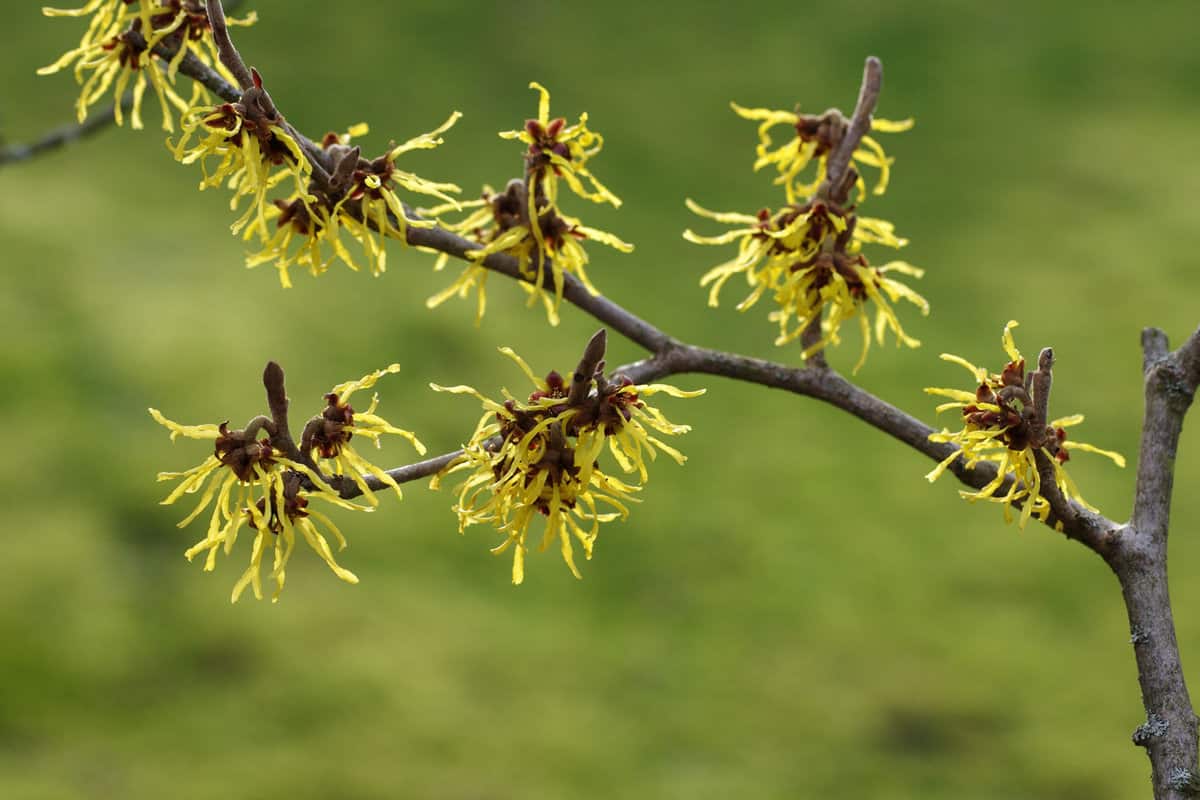
These issues can be exacerbated by poor growing conditions, such as overly wet or dry soil.
Monitor the plant regularly and address any issues promptly to prevent them from spreading.
Propagation
It can be a challenge to propagate, as it requires specific conditions for successful growth.
It is usually propagated by seed, which can take up to two years to germinate.

You can also use cuttings, but they may be slow to root.
In addition, witch hazel is not widely available in nurseries, making it challenging to obtain for home gardeners.
Despite some challenges, the plant can thrive with proper care and attention, providing beautiful blooms and foliage for years to come. (Reference: Tips To Grow Witch Hazel)
The Verdict
Witch hazel captivates the imagination with its distinctive yellow flowers and rich history.
Witch hazel is a versatile plant that can thrive in a variety of habitats and provide many benefits.
Whether you're interested in its medicinal properties or simply enjoy its beauty, witch hazel is a plant that's sure to leave a lasting impression.
Read more: Autumn Flowering Trees And Shrubs 10 Yellow Flowering TreeAnd Shrubs
